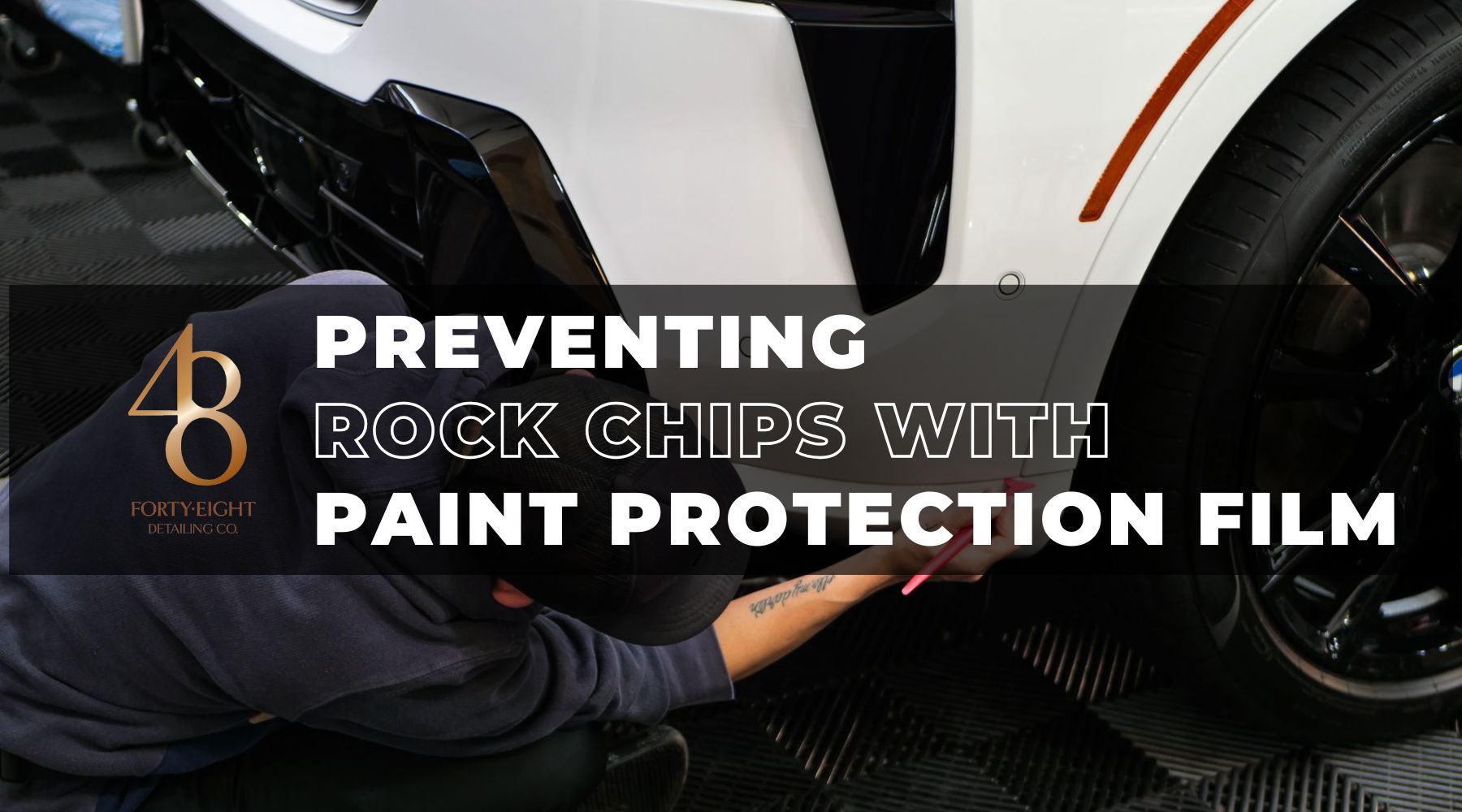At 48 Detailing, we understand the pride that comes with owning a vehicle. From the gleam of a freshly washed car to the satisfaction of seeing it gliding down the road, your vehicle is an investment you want to protect. One of the most frustrating threats to your car’s appearance is rock chips.
Those tiny pieces of debris can cause significant problems, leading to unsightly damage to your vehicle’s paint and ultimately affecting its resale value.
But here’s the good news, Paint Protection Film (PPF) is an incredibly effective solution for preventing rock chips, and we’re here to explain exactly how it works.
The Impact of Rock Chips on Your Vehicle's Paint and Value
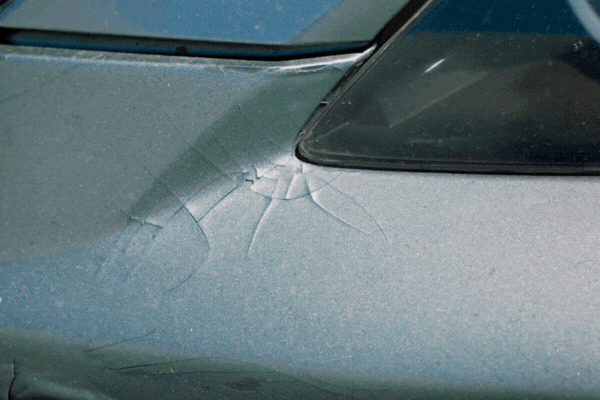
While rock chips may seem like minor annoyances, they can quickly escalate into more significant problems for your vehicle. One of the most immediate concerns is how these chips can expose the metal beneath the paint. Once exposed, the metal becomes vulnerable to corrosion, especially when it comes into contact with moisture, road salt, and other environmental factors.
This can result in rust, which not only damages your car’s body but also requires costly repairs that could have been avoided with proper protection.
The aesthetic impact of rock chips is equally concerning. These small imperfections can make your vehicle look worn and less well-maintained. Over time, even a few rock chips can detract from the smooth, glossy finish of your car, affecting its overall appearance.
For car owners, this damage is more than just cosmetic; it can significantly lower the vehicle’s resale value. Potential buyers are less likely to pay top dollar for a car with visible imperfections, and in some cases, they may seek a vehicle with a cleaner, more pristine exterior.
High-Impact Areas Most Prone to Rock Chips
When it comes to protecting your vehicle from rock chips, it’s essential to focus on the most vulnerable areas. These high-impact zones typically include:
- Front bumpers: The first line of defense, constantly exposed to debris from other vehicles and road conditions.
- Hood: As tires kick up debris, it often targets the hood, causing obvious chips.
- Side mirrors: While not as exposed as the bumper or hood, side mirrors can still take their share of hits, especially at higher speeds.
- Fenders: Like the front bumper, the fenders are often in the direct path of stones and debris, leading to frequent damage.
These areas are the first to show signs of wear and tear, and they are the parts that benefit most from protection, like PPF, to ensure the longevity of your vehicle’s appearance and overall integrity.
How Does Paint Protection Film (PPF) Prevent Rock Chips?
Now, let’s talk about the solutio, Paint Protection Film. You may be asking yourself, “Does PPF prevent rock chips?” The answer is a resounding yes! Here’s how it works:

Impact Absorption and Durability of PPF
At 48 Detailing, we use PPF made from thermoplastic urethane, a highly durable material designed to absorb impacts from rocks and debris. When a rock hits the surface of the film, it absorbs the force, preventing the debris from reaching the paint underneath. This impact resistance is one of the main reasons PPF is so effective in protecting your vehicle from rock chips.
Self-Healing Properties of PPF
One of the most impressive features of modern PPF is its self-healing ability. If the film gets scratched or damaged, don’t worry! The material has a unique property that allows it to heal itself over time when exposed to heat, such as sunlight. Minor scratches from rocks and other debris will disappear, leaving the surface smooth and your car looking as good as new.
This is one of the reasons PPF is a game-changer for car owners in Surprise, AZ, where heat can help improve its performance.
UV Protection and Road Debris Defense
In addition to its ability to protect against rock chips, PPF also provides UV protection, which helps preserve your car’s paint from the sun’s harmful effects. This additional layer of security is essential in Arizona, where the sun’s rays can cause fading and discoloration to occur quickly.
So, not only does PPF defend against debris, but it also helps maintain the rich color of your vehicle’s paint.
Key Areas to Apply PPF for Rock Chip Protection
So, where should you apply PPF for maximum protection? While it’s entirely possible to cover your entire car, we typically recommend focusing on high-impact areas to maximize the value of your investment.
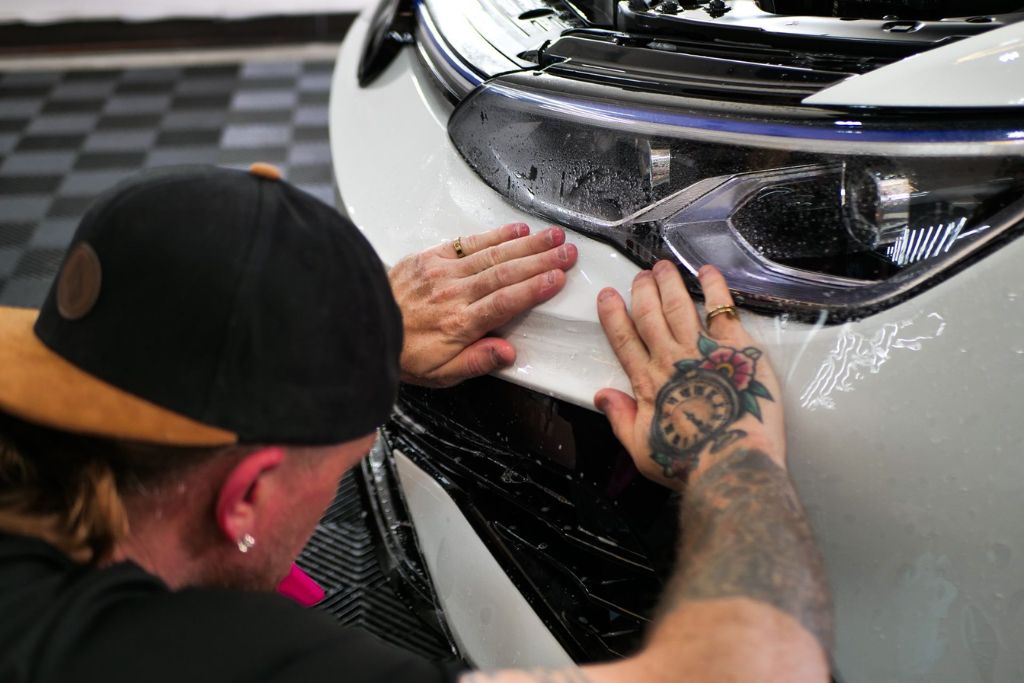
High-Impact Areas on Your Vehicle
As we mentioned earlier, the front bumper, hood, side mirrors, and fenders are the areas most susceptible to rock chip damage. These are the parts that face constant exposure to road debris, and they’re often the first to show signs of wear. Applying PPF to these areas ensures that you’re protecting your vehicle’s most vulnerable spots.
Full Coverage vs. Targeted Application
At 48 Detailing, we offer flexible options to suit your needs. While full vehicle coverage is ideal for maximum protection, many customers opt for targeted application to save costs while still protecting high-risk areas. If you’re unsure about what’s best for your vehicle, we’re happy to guide you through the decision-making process and recommend a solution that suits your needs.
For more information, you can read our detailed guide on the pros and cons of paint protection film.
The Importance of Professional PPF Installation
Installing PPF isn’t something you want to leave to chance. A perfect, bubble-free application is crucial for ensuring that the film lasts and protects your vehicle as intended. That’s why we always recommend professional PPF installation. Our experienced team at 48 Detailing uses only the highest-quality materials and provides expert installation for a flawless result.
If you’re wondering how PPF installation helps your car, check out how long PPF lasts to learn more about its durability.
Long-Term Benefits of PPF: Why It's a Smart Investment
If you’re still wondering whether PPF is worth the investment, here are some compelling reasons to consider it.
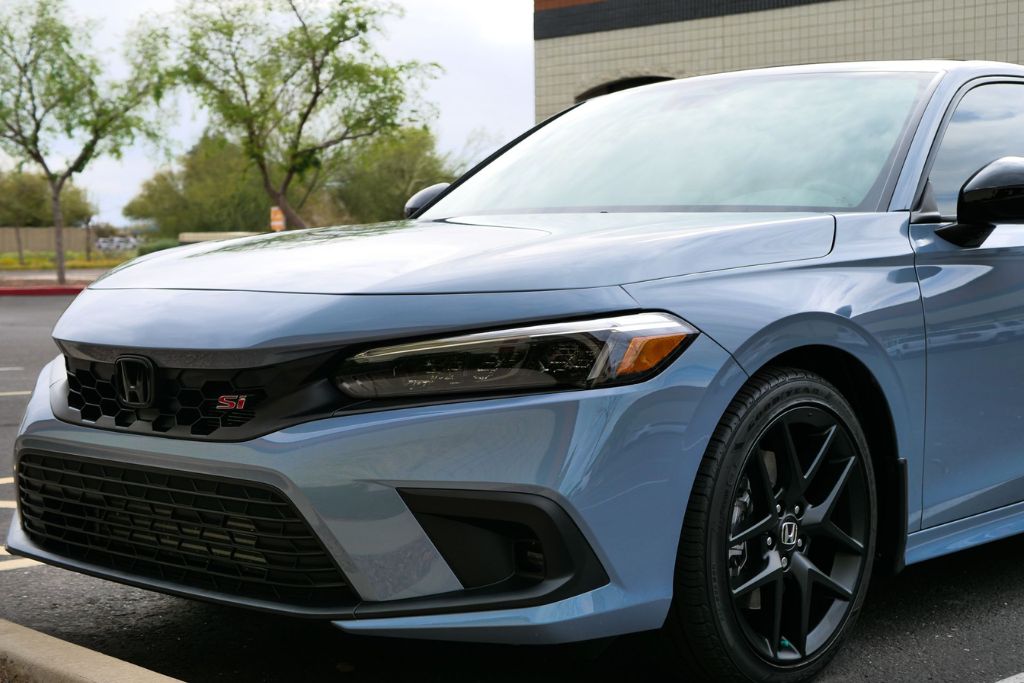
The Durability of PPF and Protection Over Time
PPF is built to last. Once applied, it provides long-term protection from rock chips, road debris, and environmental wear. With proper maintenance, you can expect PPF to perform for many years, saving you from costly repairs and paint touch-ups down the line.
Vehicle Aesthetics and Resale Value
When your car’s paint remains in pristine condition, it not only looks great but also helps retain its value. The PPF protects your car’s exterior from chips, scratches, and fading, keeping it looking new. And when it’s time to sell or trade in your vehicle, a well-maintained paint job can significantly boost its resale value.
Cost vs. Benefit: Is PPF Worth It?
At first glance, PPF installation may seem like an upfront expense, but when you compare it to the cost of repainting or repairing rock chip damage, the value becomes clear. Over time, PPF pays for itself by protecting your vehicle’s paint and preventing the need for costly touch-ups.
Additional Considerations When Choosing PPF for Your Vehicle
Before proceeding with PPF, there are a few key points to consider.
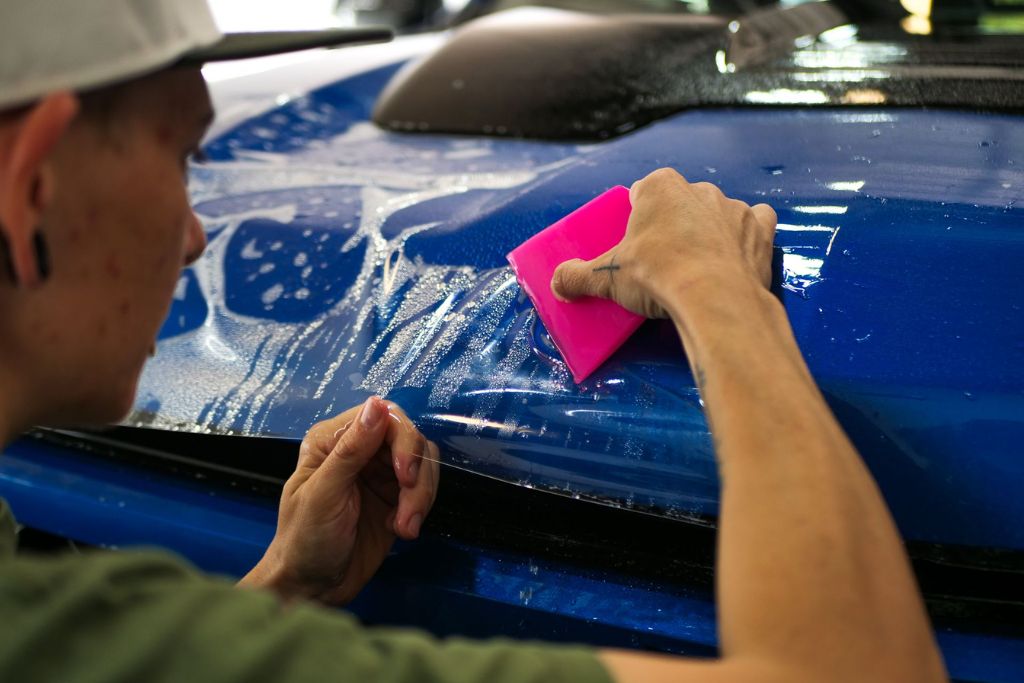
Types of PPF: Clear Bra and Other Options
The term Clear Bra is often used interchangeably with PPF; however, various types of PPF materials are available. Whether you’re looking for a basic option or something more robust, we’ll help you choose the right one for your needs.
Maintenance of PPF: Keeping Your Vehicle Protected
Caring for PPF is simple. Regular washing and gentle cleaning with non-abrasive products will keep it looking great. It’s essential to avoid harsh chemicals, as they can damage the film. With minimal upkeep, your PPF will continue to perform well for years to come.
UV Protection and Other Protective Features
In addition to protecting against rock chips, PPF also guards your vehicle against UV rays that can cause fading. The UV protection built into the film ensures that your car maintains its vibrant color, even in Arizona’s intense sun.
Why Professional PPF Installation is Crucial
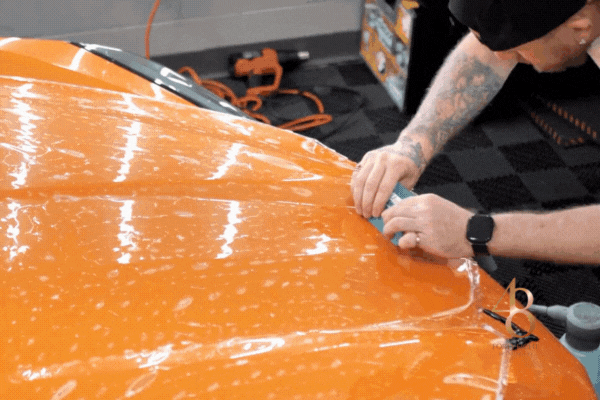
Expertise in PPF Installation
When it comes to PPF, proper installation is key. Our team at 48 Detailing has the experience and expertise to install the film perfectly, ensuring optimal protection for your vehicle. From careful application to precise cutting, we handle every detail with utmost attention.
Avoiding Common Mistakes with DIY PPF Installation
While DIY kits are available, they often fall short of achieving a flawless application. Air bubbles, wrinkles, and misalignment can compromise the film’s protective abilities. With professional installation, you can be confident that your PPF will be installed correctly, ensuring long-lasting protection.
Conclusion
At 48 Detailing, we believe that Paint Protection Film (PPF) is one of the best investments you can make for your vehicle. Not only does it prevent rock chips and road debris damage, but it also helps preserve your car’s paint, enhances its resale value, and protects it from the harsh elements. Whether you’re interested in PPF installation for high-impact areas or full vehicle coverage, we’ve got you covered.
If you’re ready to protect your vehicle with the best PPF available, contact us at 48 Detailing today. Let us help you keep your car looking like new for years to come.
Frequently Asked Questions (FAQ)
How does paint protection film prevent rock chips?
PPF absorbs the impact of rocks and debris, preventing them from damaging your vehicle’s paint.
Why is PPF effective against road debris?
The durability of PPF allows it to deflect and absorb the force of road debris, protecting your car’s exterior.
What makes PPF self-healing?
The self-healing properties of PPF allow minor scratches and abrasions to disappear when exposed to heat, keeping your vehicle looking flawless.
Why should I apply PPF to high-impact areas?
High-impact areas are more vulnerable to rock chips. By applying PPF to these areas, you’re ensuring that the most susceptible parts of your car are protected.
How long does paint protection film last?
With proper care, PPF can last up to 10 years or longer, providing lasting protection.
Why is professional PPF installation recommended?
Professional installation ensures the film adheres properly, guaranteeing maximum protection and durability.

